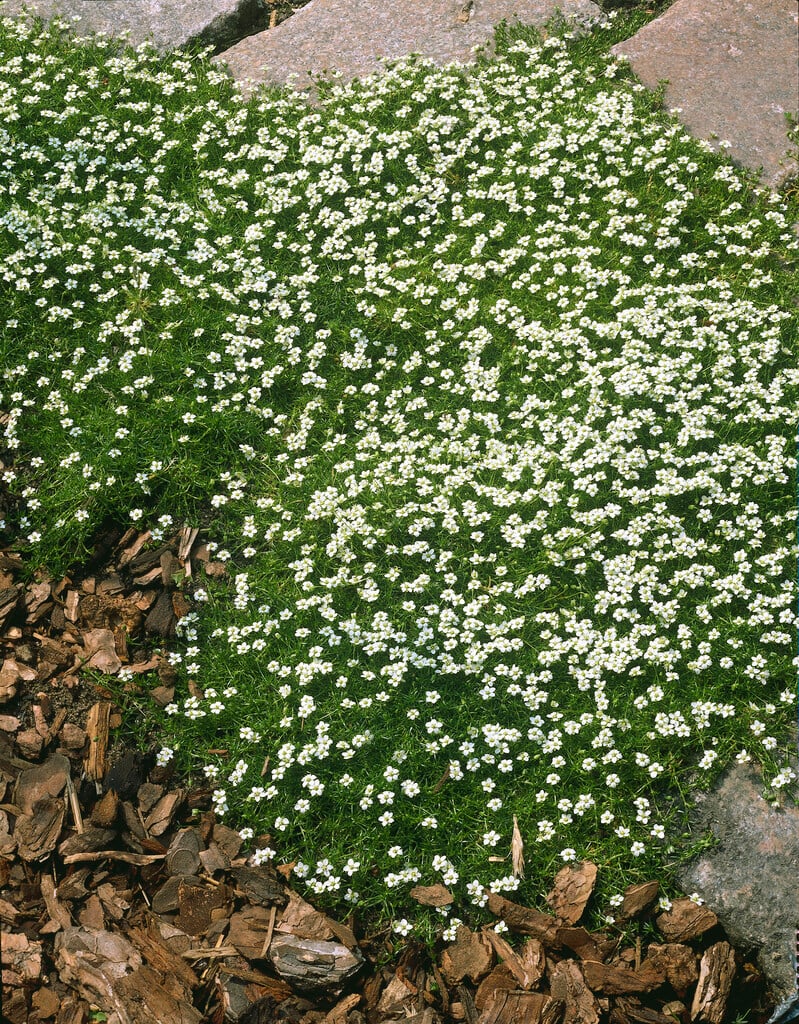Sagina subulata
heath pearlwort
A low-growing evergreen perennial, forming dense mats of slender stems that root at the the nodes, with fine, linear mid-green leaves held in pairs along the stems. Tiny white flowers are held up on stems to 4cm high in summer
Size
Ultimate height
Up to 10cmTime to ultimate height
2–5 yearsUltimate spread
0.1–0.5 metresGrowing conditions
Moisture
Moist but well–drainedpH
Acid, NeutralColour & scent
| Stem | Flower | Foliage | Fruit | |
| Spring | Green | |||
|---|---|---|---|---|
| Summer | White | Green | ||
| Autumn | Green | |||
| Winter | Green |
Position
- Full sun
- Partial shade
Aspect
East–facing or South–facing or West–facing
Exposure
Exposed or Sheltered Hardiness
H6Botanical details
- Family
- Caryophyllaceae
- Native to GB / Ireland
- Yes
- Foliage
- Evergreen
- Habit
- Matforming
- Genus
A genus of 20 to 30 mat-forming annual or perennial herbs, native to temperate regions in the Northern Hemisphere. The slender foliage is emerald green and moss-like, and small white flowers appear in the summer
- Name status
Correct
- Plant range
- Europe
How to grow
Cultivation
Grow in moderately fertile, acid to neutral soil, in full sun with some midday shade. Dislikes intense heat, drought and waterlogging. May become leggy in too much shade. Tolerates light foot traffic, good for gaps in paving as well as rock gardens, troughs and small, low-use lawns
Propagation
Propagate by seed, sown in containers in autumn, or by division in spring
Suggested planting locations and garden types
- City and courtyard gardens
- Cottage and informal garden
- Gravel garden
- Patio and container plants
- Rock garden
- Ground cover
Pruning
No pruning required, but may be trimmed back from paving to keep edges neat
Pests
May be susceptible to aphids, and to red spider mite if grown under glass
Diseases
Generally disease-free
Love gardening
Sign up to receive regular gardening tips, inspiration, offers and more
View our Privacy Policy
Get involved
The Royal Horticultural Society is the UK’s leading gardening charity. We aim to enrich everyone’s life through plants, and make the UK a greener and more beautiful place.

